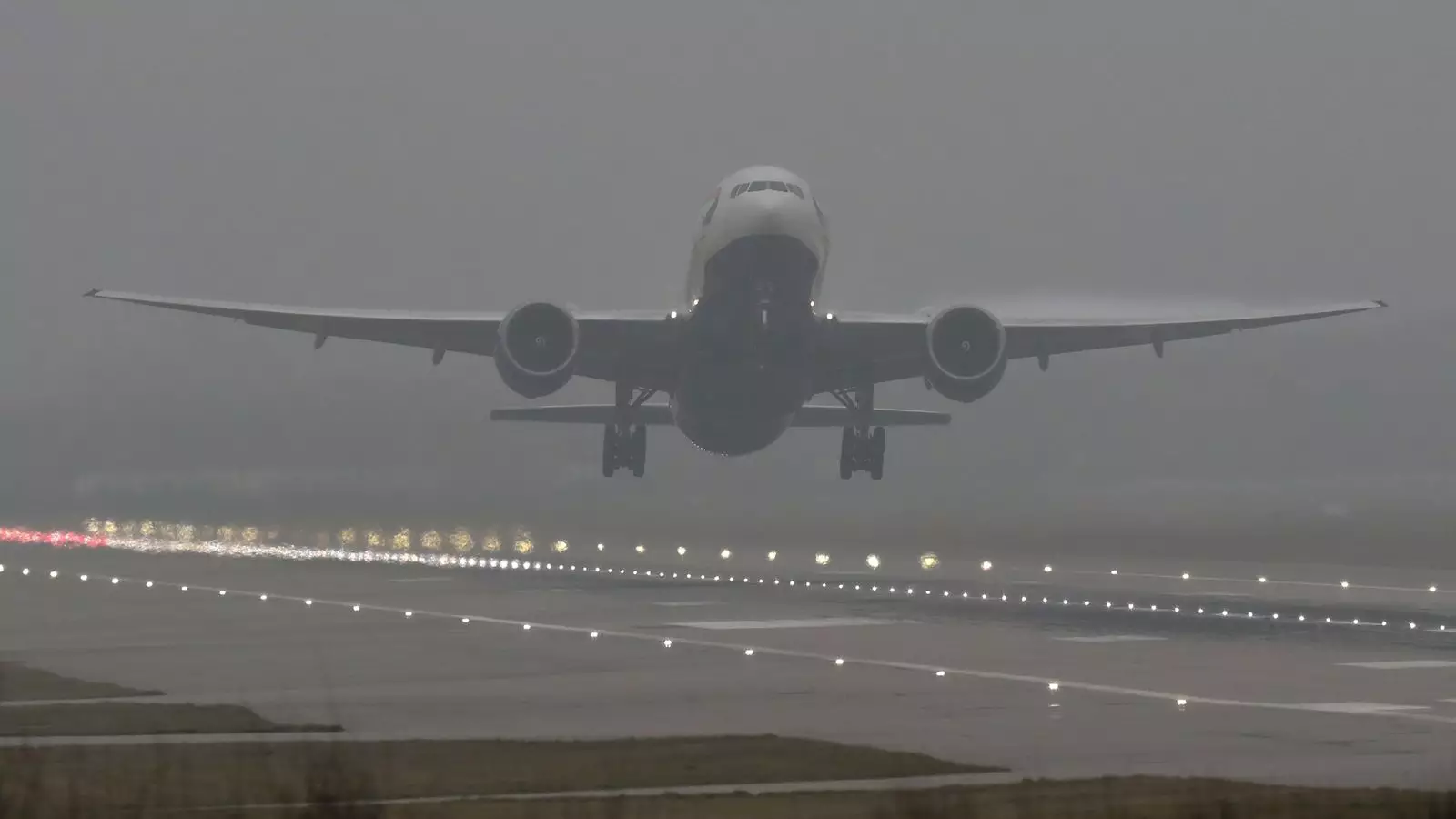The UK is currently grappling with a significant weather phenomenon: heavy fog. This low-visibility condition has led to widespread flight delays and cancellations across several major airports. Travel journalist Simon Calder reported that around 20,000 individuals experienced travel disruptions due to these weather conditions just last Friday. The National Air Traffic Services (NATS) stepped in, emphasizing that these air traffic restrictions were necessary to uphold safety standards. As they stated, such measures are never taken lightly; rather, they are implemented to protect passengers and crew alike during adverse conditions.
Notably, airports such as Gatwick and Heathrow reported numerous delays—Gatwick saw around 35 departures and 26 arrivals delayed before 11 a.m., while Heathrow faced similar issues with delayed departing flights. This trend extended to Manchester Airport as well, which experienced multiple delays for both arrivals and departures during the morning hours. As the fog worsened, over 40 cancellations were reported at different airports, showcasing just how heavily flights were impacted by this meteorological challenge.
Given the unpredictable nature of fog, both NATS and airport representatives stressed the importance of checking flight statuses prior to embarking on journeys. This advice is crucial, particularly because the fog is expected to linger, with some regions experiencing visibility reduced to a mere 100 meters. The implications for drivers are also profound; they are advised to maintain extra braking distances in low-visibility areas and to factor in additional time for travel. Frustrated motorists and anxious travelers alike are left to navigate the complications introduced by the thick fog engulfing central England, the South East, and parts of Wales.
Meteorologists from the Met Office have described the conditions expected for Saturdays, forecasting a continuation of murky visibility and chilly temperatures. While fog-related weather warnings haven’t yet been officially announced, NATS and the Met Office are closely monitoring the situation as conditions evolve. Forecasting challenges lie ahead as these fog patches may take a considerable amount of time to dissipate.
As the weekend approaches, travel plans must accommodate not just the fog, but also predictions of inclement weather for the following week. A yellow weather warning for heavy rain in Scotland poses additional concerns for upcoming events, including Edinburgh’s Hogmanay celebrations. The potential for adverse weather could lead to significant disruptions, prompting organizers to caution attendees to prepare for a variety of conditions.
Moreover, forecasts indicate that rainfall could reach alarming amounts, possibly exceeding 140mm (5.5 in) in certain areas. This precipitation risk combined with wind and the possibility of snow later in the week presents a comprehensive travel nightmare that extends beyond air travel. The Met Office has alerted the public that further warnings could emerge as situations worsen.
This situation highlights not only the direct implications of weather events on individual travel plans but also the ripple effects felt across various sectors. For instance, British Airways faced cancellations and delays due to the fog, impacting operational efficiency and contributing to passenger dissatisfaction. Furthermore, with increased diversions, passengers at Teesside Airport found themselves redirected to Newcastle, Aberdeen, and even Dublin, further complicating an already chaotic travel landscape.
Such widespread disruptions serve to remind us of the fragility of transportation networks amidst volatile weather. As travelers try to navigate these challenges, the responses from airlines and airports will be critical in mitigating the logistical fallout. Public communication from these entities remains vital, providing travelers with timely updates and guidance.
As the UK grapples with fog and its resulting travel disturbances, residents and travelers alike face the imperative of staying informed and adaptable. While weather phenomena are often unpredictable, the responses from air traffic control and airports can significantly influence how smoothly travel operations unfold. The coming days will test the resilience of the aviation sector, underscoring the need for readiness in the face of weather challenges. With the holiday season approaching, both travelers and operators must remain vigilant, prepared for whatever the weather may bring.


Leave a Reply